Kumihimo is a beautiful braid made using ancient Japanese techniques.
Originally used for practical purposes such as securing armor and clothing, they now serve many decorative functions like jewelry making and home decor.
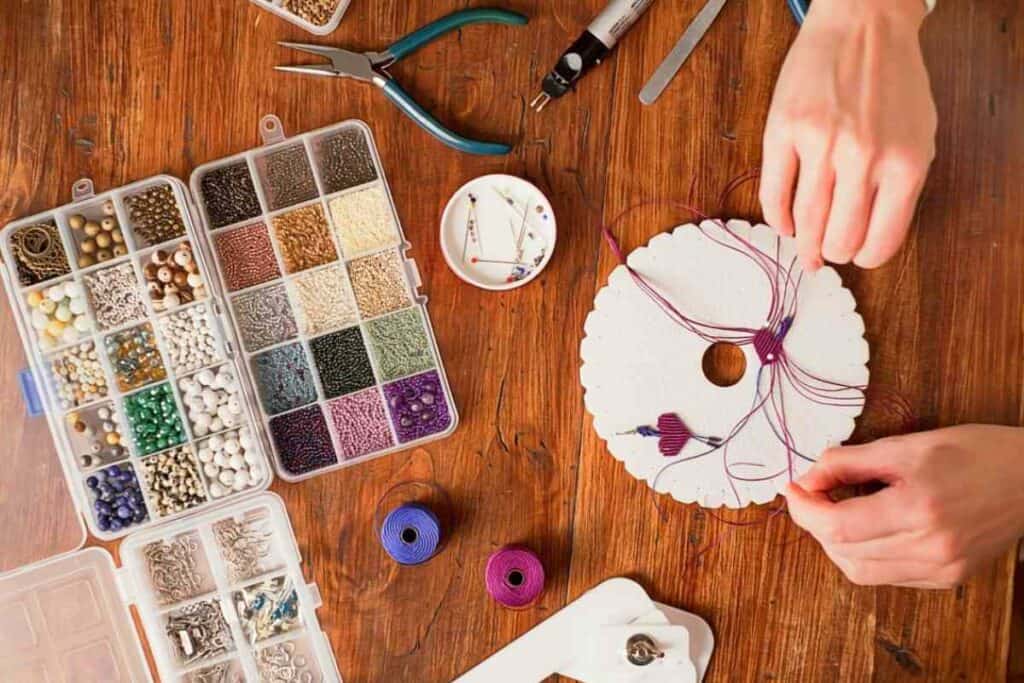
These intricate designs can be created with a simple loom or by hand knotting cords together to create stunning patterns that reflect the artistry of Japan’s rich cultural heritage.
Read on to find out more about this ancient Japanese technique.
Table of Contents
What Is Kumihimo?
Kumihimo is a term that refers to an ancient braiding technique in Japanese culture.
The word Kumihimo literally means ‘gathered threads’ and it involves using a multi-stranded cord or string known as the ‘koma’.
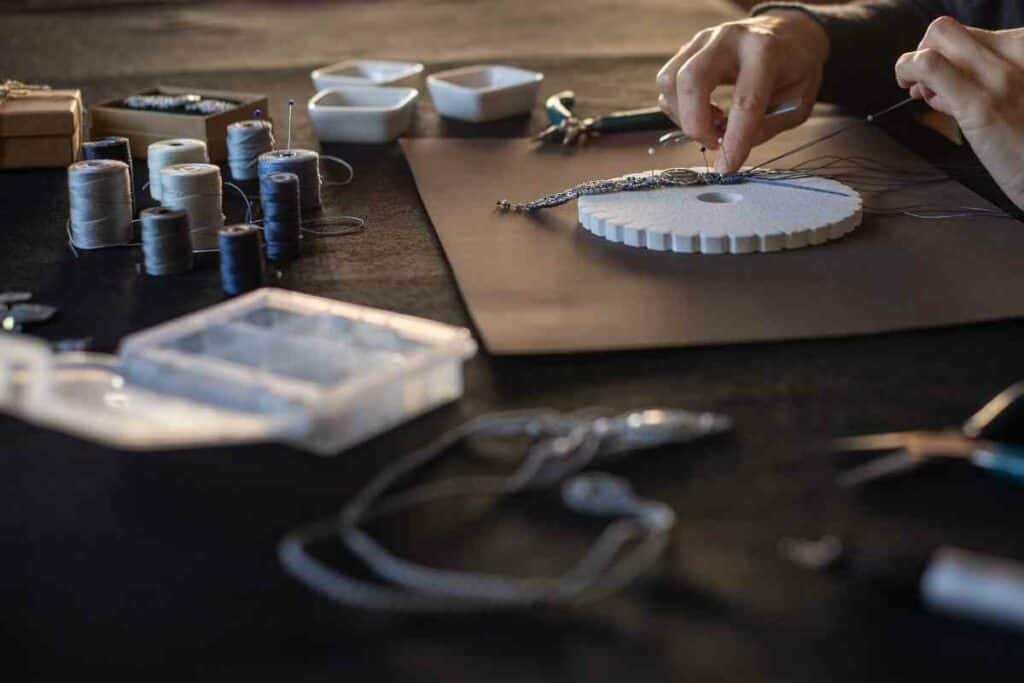
This traditional technique dates back over 1,500 years ago when they were originally used for practical purposes such as fastening samurai armor together before turning into decorations and accessories.
The weaving process itself is very intricate yet therapeutic: one must skillfully arrange individual strings on top of each other, crossing them horizontally between four prongs which are fixed onto a round template called the Marudai.
With mastery time, complicated color patterns emerge from this repetitive task with various materials being able to be used making every piece unique.
What Is Kumihimo Used For?
In Japanese tradition Kumihimo has countless uses; including though not limited to – Obijime (sash cords) worn by geisha or sumo wrestlers when participating in their activities ceremony’ Artisans make everything you can imagine- coasters jewelry pouches bookmarks keychains etc… Lampshades even seem fitting!
Kumihimo nowadays also come from silk thread sourced directly from Japan while cotton-based yarn has become quite popular too since they give off earthy tones perfect for any contemporary home decor blended with traditional Japanese culture.
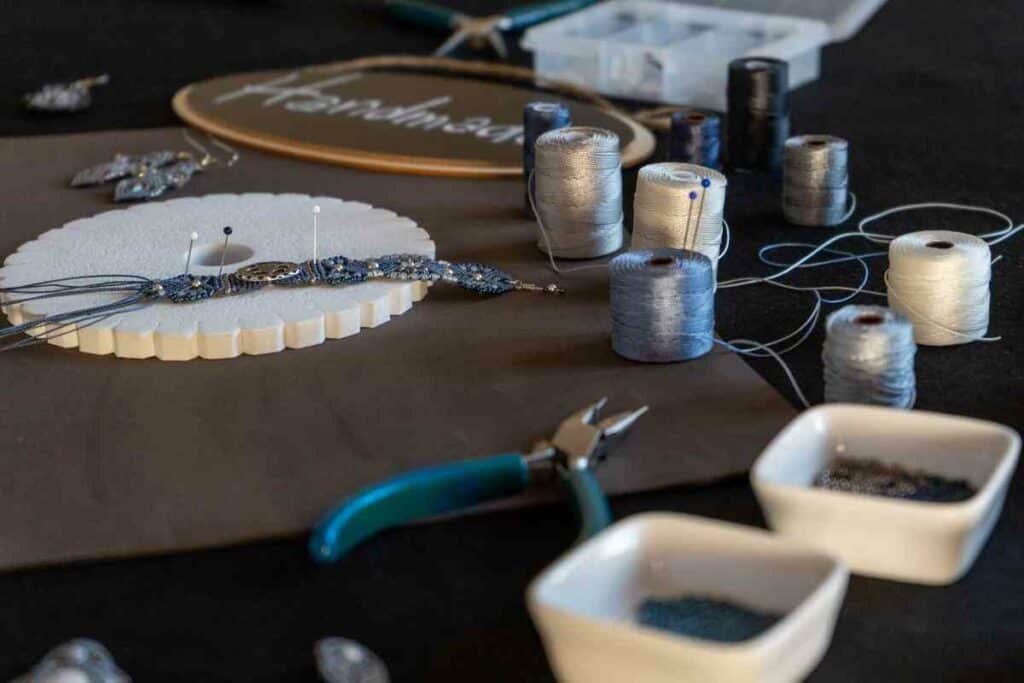
Kumihimo braiding is still very much a part of the country’s heritage, and there are numerous Kumihimo schools across Japan that teach this age-old technique.
It’s not uncommon to see locals practicing their craft in public spaces such as parks or temples.
However, it’s no longer just limited to Japan; people around the world have adopted this art form too- Etsy shops selling globally made using various threads including eco-friendly fibers which make them unique yet sustainable.
As someone who appreciates Japanese culture, I find these intricate cords incredibly special because they carry so much tradition within them and tell beautiful stories about history even today though sometimes overlooked compared to other famous bits of cultural display like pottery or anime.
What Materials Are Used in Kumihimo?
This art form involves the use of different types of materials to create intricate and beautiful patterns.
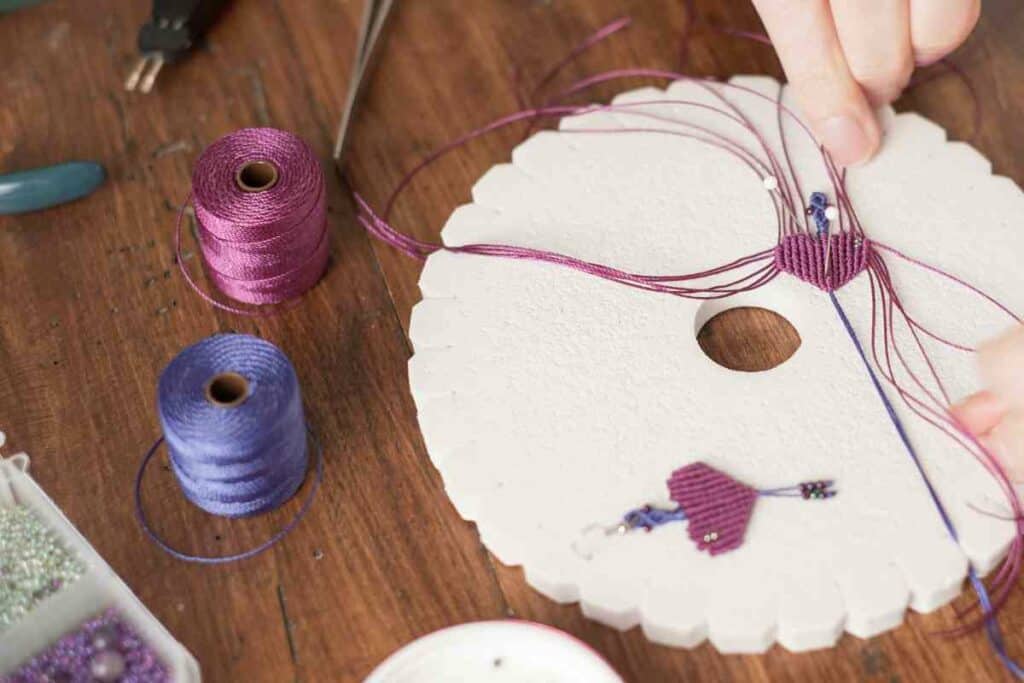
Here are some commonly-used materials in Kumihimo.
1. Silk
Silk yarns are often used in Kumihimo because their smoothness makes them easy to braid.
They come in many colors and sizes, which allow weavers to achieve different effects when creating their designs.
2. Cotton
Like silk, cotton threads can make excellent pieces for Kumihimo weaving because they’re soft and flexible if twisted up correctly; however, unlike silk fibers, cotton lacks luster.
3. Synthetic Fibers
Nylon is one example of synthetic material which blends well with other natural fibers or stands on its own due to resistant properties against physical wear and tear while boasting more vibrant colors than some naturally occurring substrates
4. Satin Cord
Satin cord is another luxurious* fiber favored by Kuminhmo artisans across Japan as it emanates a sizeable shine brighter than typical ribbon cords and ideal textiles accessories including bracelets necklaces dress ware et al..
5. Beaded and Leather Cords
The more modern-day take on this classic Kamitori decor invention leans heavily toward the inclusion of organic stones like crystal beads, as well as accents of genuine leather cords that bring depth, texture, and variety into Kumihimo braids.
6. Gold & Silver Thread
For those wanting to add some luxurious sparkle to their designs- metallic threads made from gold or silver will complete the look with ease.
They’re used widely for jewelry-making because of their durability and unique appearance that brings radiance to every design it’s included.
What Are Some Kumihimo Techniques?
Kumihimo is a traditional Japanese braiding technique that involves weaving cords or threads to create beautiful and intricate designs.
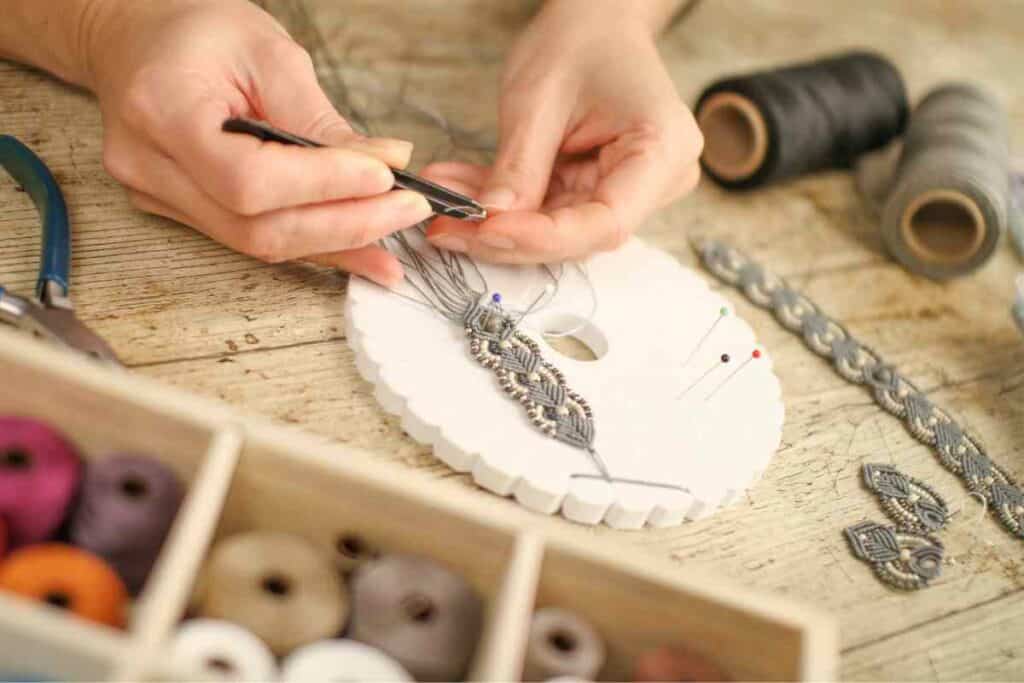
The art of Kumihimo has been around for centuries in Japan, but it’s now gaining popularity worldwide.
If you’re interested in learning this craft, there are several techniques that you can master.
Marudai
This type of Kumihimo requires the use of a loom called Marudai, which sits on top of a table.
It produces round braid patterns by twisting over-under four strands at once placed diametrically across an octagonal core.
Kakudai
Unlike Marudiai where every color is paired into two groups; In kakidamajioro each cord pair twists with other separate pairs resulting in diagonal zigzag patterned flat braid-technique allows the creation of square-shaped bracelets or belts because its rectangular prismatic plate stand helps rotate all eight colors easily.
Takadai
Takadai is another distinctive form using narrow doubled lengths arranged vertically within slender grooves standing upon four pivoting legs usually while sitting down.
By making different rotations combinations would be accomplished between Warp yarns (which will always remain immobile) And weft thread/slipcovered spools flipped from side to side.
This technique is known for producing intricate, complex patterns.
Disk Kumihimo
The disk Kumihimo requires the use of an easy-to-use circular disc and produces flat braids very quickly even if you’re a beginner.
There are four colors on each section (position) accordingly they should cross over in a certain pattern – for instance, figure-eight movement, this will emerge various interlacing designs up close or afar using silk threads 1mm-2mm thick.
Yatsu-dai
The name says it all! Using eight strands placed on top of arms constructed like stars exuding braid as six-part symmetry where only every two foreground cords alternate with the background which then returns as dominant.
Here again, by changing disposition between them we can switch tracks sounds tricky at first but becomes enjoyable step-by-step practice since our hands take over memory retention,
No matter what style appeals to your desired levels anyone interested could find detailed tutorials online resources that explain how to follow through from the beginning steps to complete projects.
Enjoy discovering new creative ways along with learning Japanese heritage embodied within these skillful techniques.
In Conclusion
In conclusion, Kumihimo is an integral aspect of traditional Japanese craftwork delicately crafted for centuries.
But, now they are finding new opportunities for growth into contemporary designs enjoyed by everyone worldwide carrying some glimpses from the long-gone era indefinitely informing newer generations on deep roots, versatility & its influence on modern patterns even beyond aesthetics!
- Sumo Wrestler Suit for Adults by TOLOCO: Best Sumo Suit?
- Eki Stamp Book (Gotta Collect Them All!)
- Explore the Fascinating World of Japanese Rubik’s Cubes
- Tenkara Fishing and 3 Best Japanese Fishing Rods for the Job
- Are Drones Allowed In Japan? (About Japan’s Drone Laws)
- 6 Best Comic Book Stores In Tokyo









